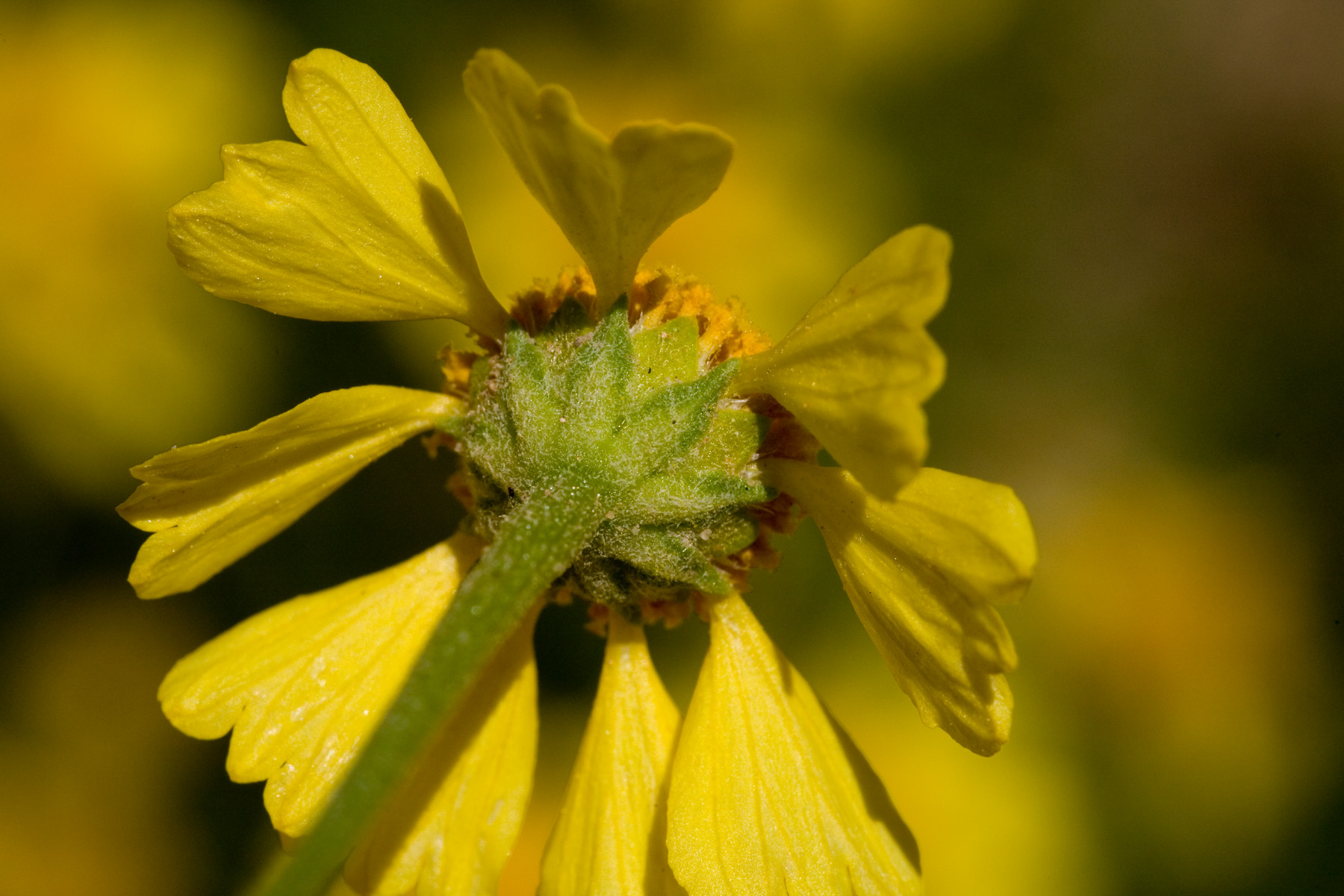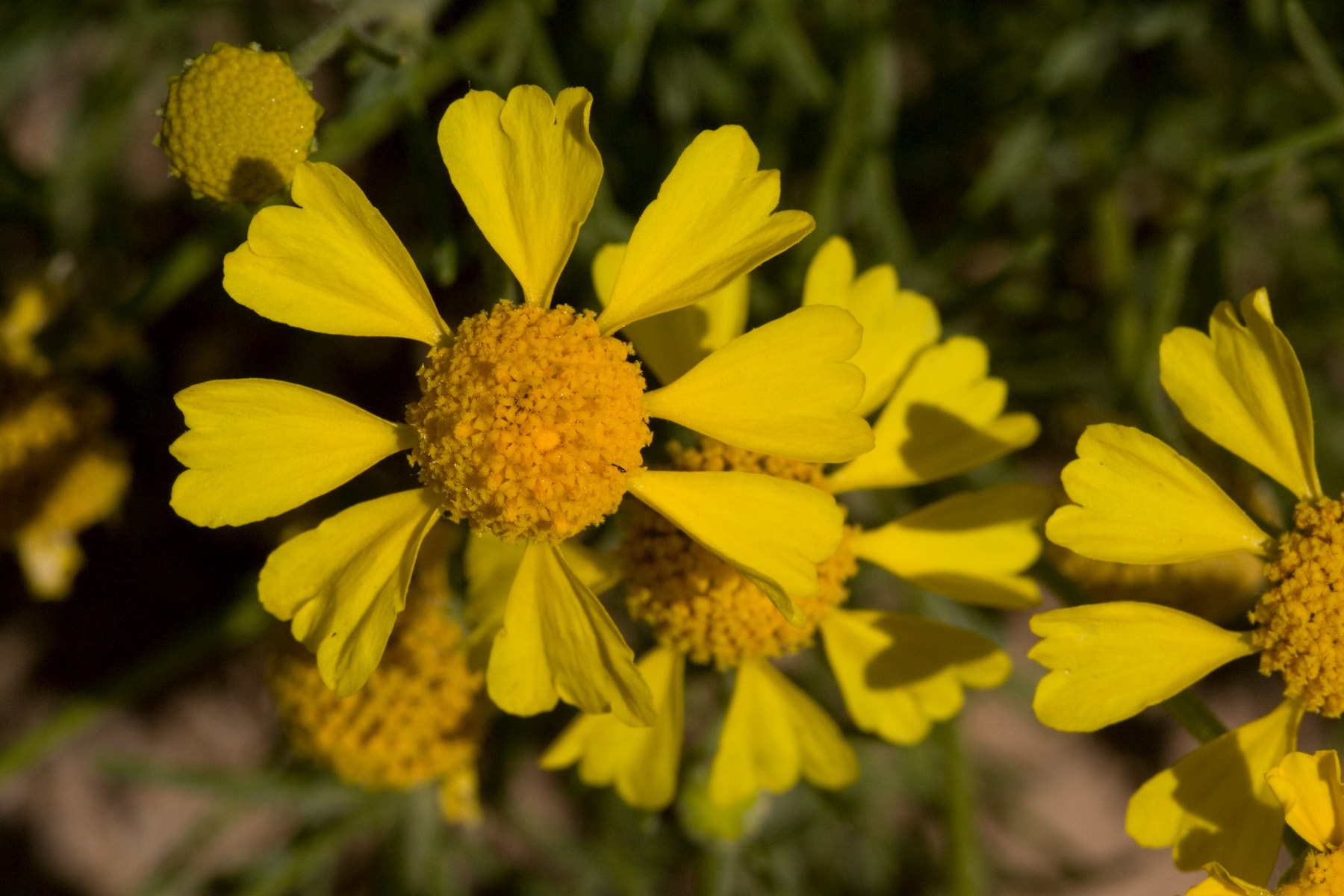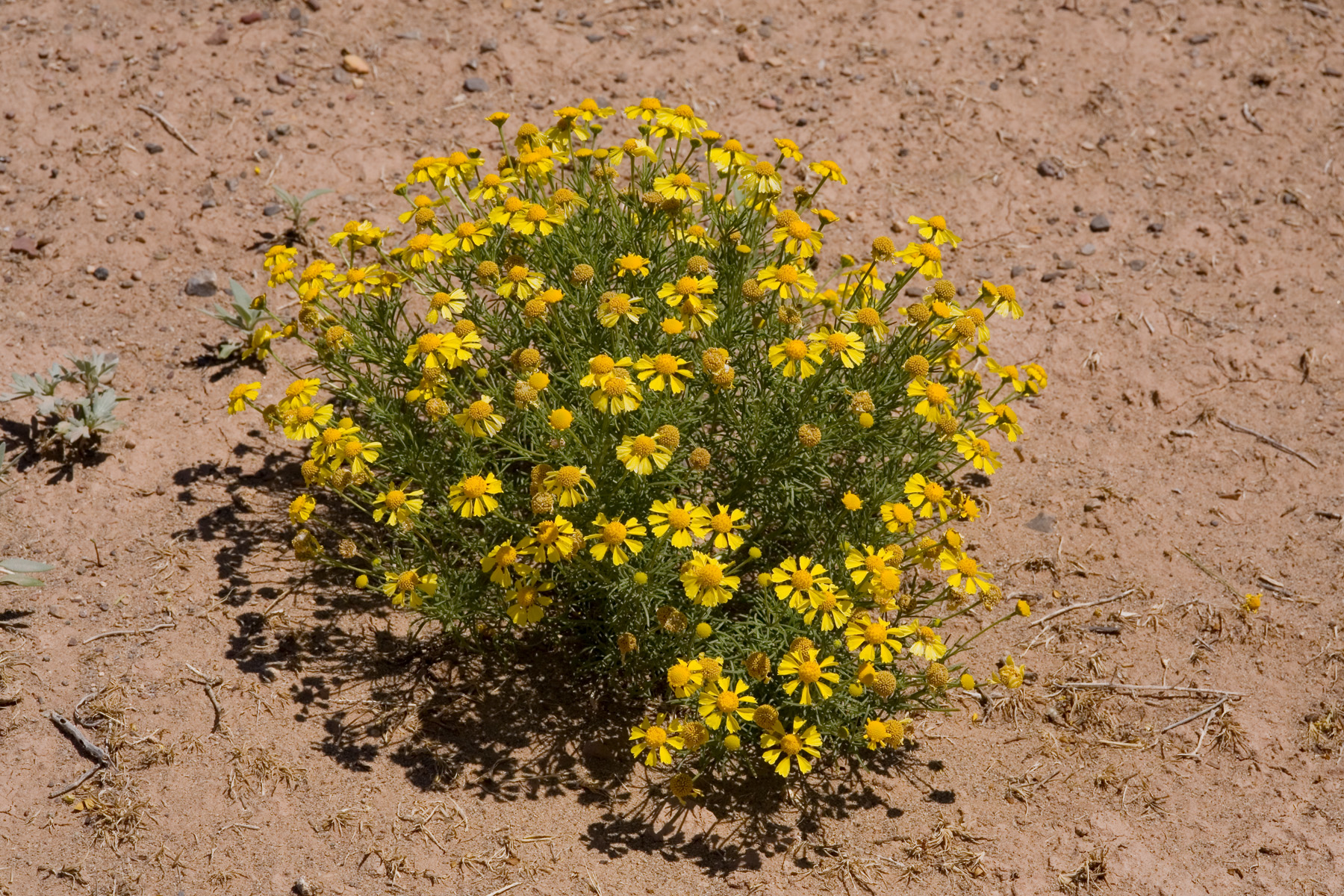Selected Plants of Navajo Rangelands
Rubberweed, bitter
Né’éshjaa’yilkee’é
(a.k.a. Rubberweed)

Rubberweed is native to the southwest United States. It grows in a variety of habitats, including rangelands and riverine areas. It is toxic to livestock, particularly sheep. Cattle will eat it when other green feed is not available. Toxicity increases with maturity of the plant. The plants grow to a height of two feet in a moundlike form. Flowers have a diameter of 3/8 to 1/2 inch.
Pingue is similar to rubberweed.
*Description courtesy of Western New Mexico University's Vascular Plants of the Gila Wilderness.


Copyright 2018 New Mexico State University. Individual photographers retain all rights to their images. Partially funded by the Western Sustainable Agriculture Research and Education Program (westernsare.org; 435.797.2257), project EW15-023. Programs and projects supported by Western SARE are equally open to all people. NMSU is an equal opportunity/affirmative action educator and employer.
NMSU does not discriminate on the basis of age, ancestry, color, disability, gender identity, genetic information, national origin, race, religion, retaliation, serious medical condition, sex (including pregnancy), sexual orientation, spousal affiliation or protected veteran status in its programs and activities as required by equal opportunity/affirmative action regulations and laws and university policy and rules. For more information please read the NMSU Notice of Non-discrimination.

